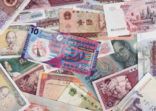“Overseas investors often point out the growth potential of emerging markets like China, in terms of the yield they can get. The mainland bond market also looks attractive to them, compared to other markets around the world,” she told Fund Selector Asia.
Onshore bond funds with an aggressive approach, for example, had three-year annualised returns of over 10% on average, with volatility around about 8%.
Those with less risky allocation also returned an average 5% with a 3-4% volatility, said Niki Wu, one of the six analysts on the Morningstar China research team.
But investors should be aware of the special characteristics of onshore funds, especially when the market is likely to stay volatile for the rest of the year.
For instance, Wu pointed out that it is unusual to have pure bond funds in mainland China, but rather a more flexible allocation of less than 20% into equities or convertibles. Hence the return for a “bond” fund might be higher, but it also comes with greater volatility.
However, onshore bond funds may also act as complement to the overseas bond markets, as the latter usually have products with a less flexible investment style, Wang added.
Onshore bond prices, in particular sovereign and financial bonds, also tend to fluctuate quickly in response to policy changes, she added.
Ratings and risk
The credit ratings for mainland corporate bonds do not necessarily reflect the underlying risks, Wu said, adding that China had no credit defaults before 2014. Therefore, most fund managers have their internal bond rating team to access the risks.
“Overseas investors also need to bear in mind that mainland funds tend not to be compared to the benchmark, but focus more on the growth potential of certain industries,” Wang said.
This year, which is expected to have strong market volatility, might prove challenging for equity and bond funds in China, as they are less flexible in terms of the percentage of cash holdings.
“As the market is expected to stay volatile for the rest of this year, investors have adopted a lower risk appetite. More traditional funds, such as guaranteed funds, bond or commodity funds, and those with a low volatility strategy, are likely to be launched to meet the greater demand [for lower risk products],” Wang noted.
The Morningstar China research team currently analyses 63 onshore funds, including most of the funds available under the Mutual Recognition of Funds scheme. Its second “China Best Ideas” report was out earlier this month, which recommended 22 onshore China funds that are MRF-approved or waiting approval for sale in Hong Kong.
So far 32 mainland funds were approved by the Securities and Futures Commission to sell in Hong Kong, while 7 Hong Kong-domiciled funds were approved for northbound sales.















